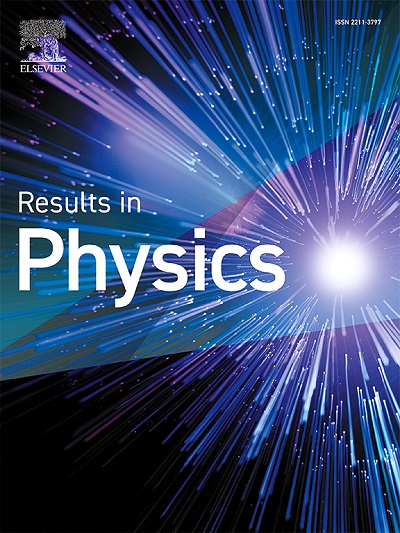Identifying chaotic dynamics in nonuniformly dissipative and conservative dynamical systems from the varying divergence
IF 4.4
2区 物理与天体物理
Q2 MATERIALS SCIENCE, MULTIDISCIPLINARY
引用次数: 0
Abstract
As well-known, chaotic dynamics can appear in both living and artificial systems, resulting in several applications in science and engineering. Thus, the persistent question is whether a determined time series represents truly chaotic behavior. Although many familiar tools exist to respond to that question, new efficient algorithms in time and complexity must be developed to cope with the striking characteristics of novel chaotic systems, e.g., systems with non-uniform divergence.
In this framework, a new metric to evaluate the chaotic behavior in nonuniformly dynamical systems using the divergence operator of the vector field is proposed. Such systems are characterized by presenting a non-constant divergence, i.e., the divergence changes as time evolves since it depends on the system states. The proposed metric can be applied in dissipative and conservative systems with non-uniform divergence. By expanding the dynamical system with the time derivative of the divergence operator, the proposed approach can identify periodic and chaotic regions from the averages of the derivative of the divergence for the first orbit (ADDFO) and second orbit (ADDSO). We evaluate the performance of the algorithm in various systems: the typical Rossler system, a three-neuron Hopfield neural network, the Pernarowski model of pancreatic beta-cells, and the Sprott D conservative system. From the numerical results, we explicitly demonstrate that the proposed metric provides an efficient algorithm regarding simulation time and complexity with the best performance compared to Lyapunov exponents and bifurcation diagrams.
从变散度中识别非均匀耗散和保守动力系统中的混沌动力学
众所周知,混沌动力学可以出现在生命系统和人工系统中,在科学和工程中有许多应用。因此,一直存在的问题是确定的时间序列是否代表真正的混沌行为。尽管存在许多熟悉的工具来回答这个问题,但必须开发新的有效算法来处理新的混沌系统的显著特征,例如,具有非均匀散度的系统。在此框架下,提出了一种利用矢量场散度算子评价非均匀动力系统混沌行为的新度量。这种系统的特点是呈现非恒定的散度,即散度随时间的变化而变化,因为它取决于系统状态。该度量可以应用于非均匀散度的耗散和保守系统。该方法利用散度算子的时间导数对动力系统进行扩展,利用第一轨道(ADDFO)和第二轨道(ADDSO)的散度导数的平均值来识别周期区和混沌区。我们评估了算法在各种系统中的性能:典型的Rossler系统,三神经元Hopfield神经网络,胰腺β细胞的Pernarowski模型和Sprott D保守系统。从数值结果中,我们明确地证明了与Lyapunov指数和分岔图相比,所提出的度量提供了一种有效的算法,在模拟时间和复杂性方面具有最佳性能。
本文章由计算机程序翻译,如有差异,请以英文原文为准。
求助全文
约1分钟内获得全文
求助全文
来源期刊

Results in Physics
MATERIALS SCIENCE, MULTIDISCIPLINARYPHYSIC-PHYSICS, MULTIDISCIPLINARY
CiteScore
8.70
自引率
9.40%
发文量
754
审稿时长
50 days
期刊介绍:
Results in Physics is an open access journal offering authors the opportunity to publish in all fundamental and interdisciplinary areas of physics, materials science, and applied physics. Papers of a theoretical, computational, and experimental nature are all welcome. Results in Physics accepts papers that are scientifically sound, technically correct and provide valuable new knowledge to the physics community. Topics such as three-dimensional flow and magnetohydrodynamics are not within the scope of Results in Physics.
Results in Physics welcomes three types of papers:
1. Full research papers
2. Microarticles: very short papers, no longer than two pages. They may consist of a single, but well-described piece of information, such as:
- Data and/or a plot plus a description
- Description of a new method or instrumentation
- Negative results
- Concept or design study
3. Letters to the Editor: Letters discussing a recent article published in Results in Physics are welcome. These are objective, constructive, or educational critiques of papers published in Results in Physics. Accepted letters will be sent to the author of the original paper for a response. Each letter and response is published together. Letters should be received within 8 weeks of the article''s publication. They should not exceed 750 words of text and 10 references.
 求助内容:
求助内容: 应助结果提醒方式:
应助结果提醒方式:


